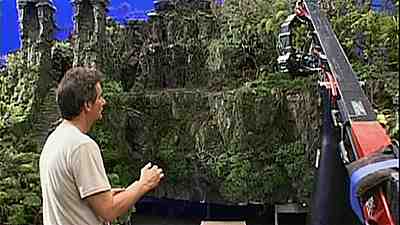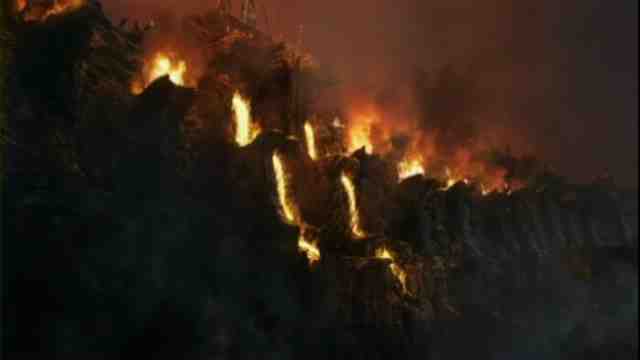<back
| Here are some pictures of my motion control systems used in the production of Peter Jackson's King Kong. All these images are from the "2 Disc Special Edition" and are used with the good graces of Universal Studios Home Entertainment. |
| A motion control operator controls a boom camera system with a Kuper Jogbox, sadly hidden from view by his forearm. He is "browsing the move" with a joystick knob which advances the programmed motion forward or backward at various speeds much the same way as a video editing system can browse through a tape. This helps with the lighting setup and dressing the set for the particular shot. |
|
 |
A typical motorized camera dolly system shooting the Kong Wall miniature. The white cards mounted on the dolly are probably for fill light. |
| This a section of my software's main screen. The axis names beginning with "V" are so-called virtualized axes. Regardless of the actual geometry of the robotic camera system, the software coordinates and corrects the various motors in a way that allows the move to be specified in terms of lens position in idealized Cartesian coordinates. This is key to exchanging motion data files between other motion control rigs and computer graphic systems, so that all film elements are seen from a consistent point of view. The system supports up to 48 motion controlled axes, plus several virtualized axes. The camera film advance is sometimes controlled as an axis, as in this case. |
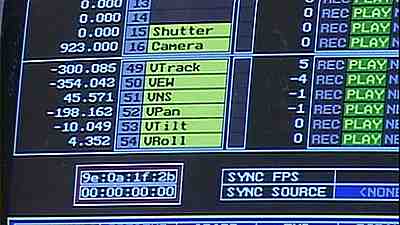 |
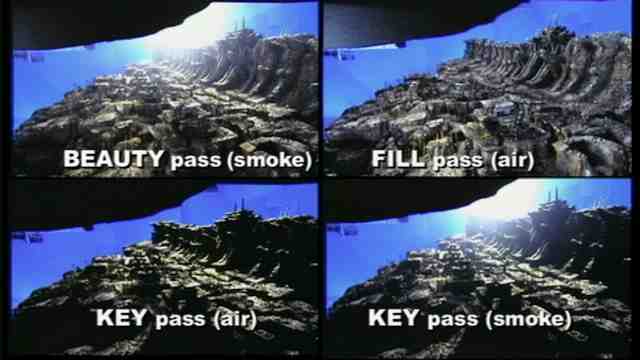 |
Here are four variations shot with the same set and camera motion. Each shot has some appearance change. Since the camera motion is reproduced in all the shots, they can be layered together in post production to best match the director's vision and the look of shots that come before and after. The parts of the set that are blue will later be filled in with other imagery, perhaps from live action or computer graphics, created with the same motion data file so that all the elements that make up the scene lock together. |
| Here's another example of compositing multiple sources of imagery to create a specific look. At top left a miniature set with its basic lighting. Next to that, the same miniature set shot with effects smoke only. The green areas in the computer graphic shot at the bottom will be rendered as rivers of fire. The motion is duplicated in all the shots to create the very dramatic scene below. |
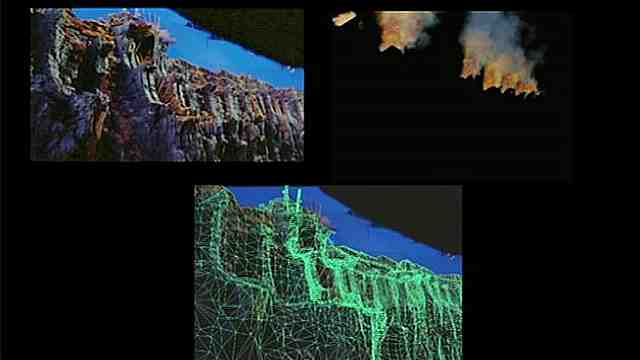 |
|
|
| Here are two shots seen one atop the other. The Top shot shows a miniature cave set, the bottom shows an actor on a partially prepared live action set. Sections of both shots will selectively be layered together for the final shot. This scene features a long tracking shot as the camera moves parallel to the actor as he approaches the cave. Both the live action and model shot were photographed with the same motion, with the linear motions scaled down for the miniature. While the actor was shot at 24 FPS, the miniature move was shot much slower to use a small f-stop for maximum depth of field. |
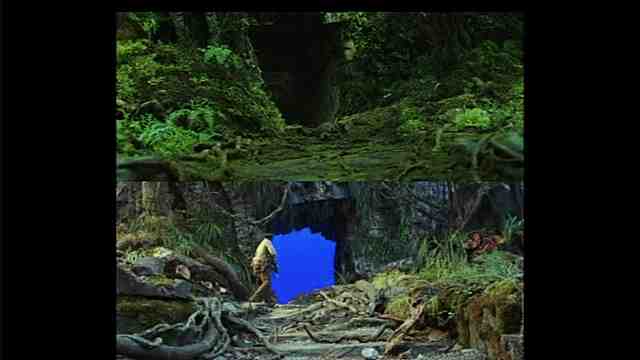 |
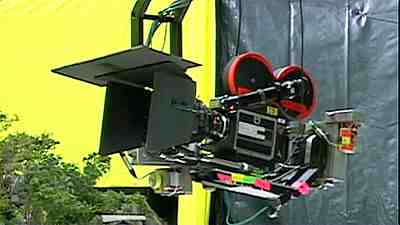 |
A classic MItchell rackover camera at work on the miniatures. This camera is at least 50 or 60 years old, but is still a great choice for effects work because of its ultra steady, pin registered film movement. This one is a "Fries" modified camera with a through the lens viewing system added. While state of the art Arriflex 435 cameras were also used on the model sets, old veterans like this more than hold their own. An interesting footnote is that the 90+ year old Bell & Howell 2709 camera featured as a prop in the movie still finds use in modern effects work, although not in this particular film! |
